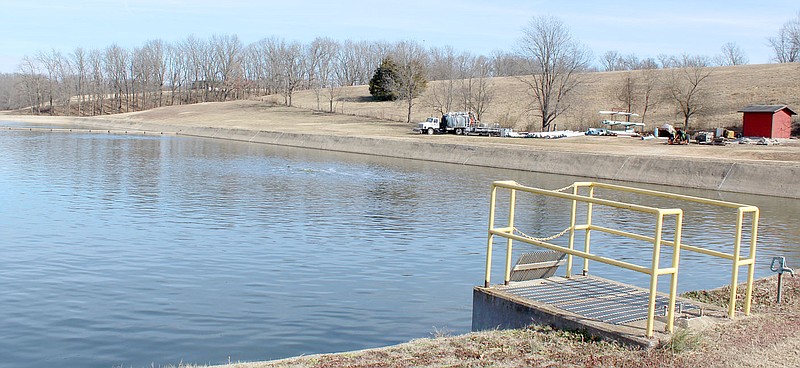The city of Pea Ridge has completed the engineering phase and is working to secure financing for a new sewer treatment facility, to replace the current at-capacity facility.
Ken Hayes, manager of water utilities for the city, said "We're at capacity. We kind of got to the point a year ago we had no other choice."
While the current facility on Clark Street is rated to handle 300,000 gallons of waste water each day, he said, the city is currently producing between 305,000 and 310,000 -- while it continues to grow.
The new facility, he said, will cost roughly $5.5 million, and the city has worked to reduce costs and reuse as much infrastructure as possible. The end result, he said, will be a plant that can handle 1 million gallons per day, and an increase on residents' sewer bills intended to be $12.45 per month.
"It's just the cost of all the growth," he said. "We put this off as long as we can."
Once the project is financed, he said, he estimates construction will take roughly one year. He's expecting to have a plant mostly finished next spring, he said.
"When this is done," he said, "Pea Ridge can double again. We will not have a problem with capacity."
While the old facility, built in 1984, is a lagoon plant, which uses a series of aerated lagoons that clean the water almost entirely naturally, he said, the new facility will be an activated sludge plant, which cleans water far faster, and more thoroughly.
The lagoon plant, he said, takes 45 days to clean whatever water comes into it. It uses aerators to oxygenate the water and speed things up, but it mostly relies on natural processes. The activated sludge, by comparison, takes only a few days, he said.
The current system, he said, uses chlorine and filtration for the final cleansing, but this new facility will use UV light to kill bacteria instead, while reducing the number of chemicals pumped into Otter Creek.
Additionally, he said, lagoon plants tend to produce extremely large amounts of ammonia in the winter, and generally work more slowly when it's colder.
"Ammonia at a low level is not a problem," Hayes said, "but once you get above five parts per million, it kills baby fish."
Because the waste water ends up in Missouri, he said, the city does have to deal with Missouri's environmental regulations. About a decade ago, he said, Bentonville and several other cities built new wastewater facilities, in part to comply with these regulations. Missouri didn't bother Pea Ridge as much, he said, because it's a smaller city.
"We've been kind of the low flying plane under the radar," Hayes said. "They hit Bentonville pretty hard and pretty fast, but Bentonville has a lot more discharge into that stream than we do."
The city initially looked into doing this in 2009, he said, and at the time estimates suggested the city would pay more money and get less plant -- $7.6 million for a 500,000-gallon plant.
But the city has been aware it needs to be ready for this, he said. Recently, the main line to the sewage facility was replaced with a 30-inch pipe, he said, to prepare for additional growth.
But that's not to say the new plant going in will be without challenges. For one, he said, he needs to get his Wastewater 4 license to be able to operate the plant, and he'll be testing for it in March. This requirement, he said, is because the plant itself is more challenging to control.
Additionally, the city needs to secure financing as quickly as it can. The market, he said, is fairly volatile right now, and interest rates have been climbing drastically.
"Just one percentage on $5.5 million is a sizable chunk," Hayes said.
He's looked into rural development loans through the USDA, he said, and found that while they do have tighter requirements, including environmental studies, their interest rates are lower than he can find elsewhere -- 3 3/8 percent compared to around 5 percent.
The catch, he said, is that rate is only available this quarter, because the USDA sets its rates quarterly. This means the requirements have to be met before March, or that rate could increase. If the city has a lower rate and pays less on its new system per month, he said, those savings can be reflected in a smaller increase in residents' sewer bills.
"Engineers have a lot to do right now," he said.
General News on 02/08/2017
